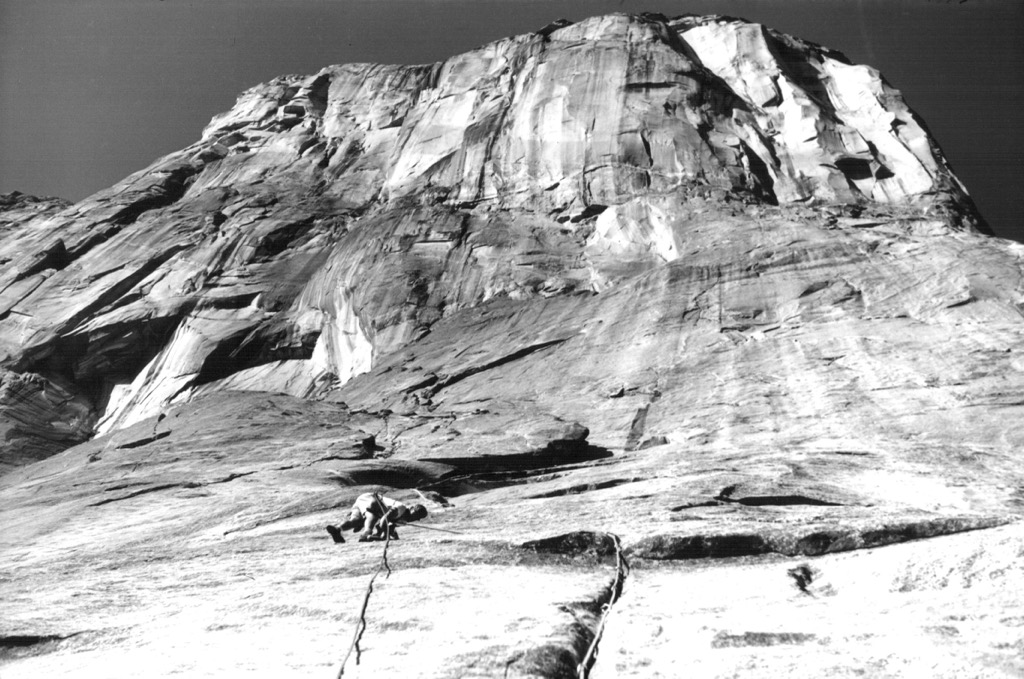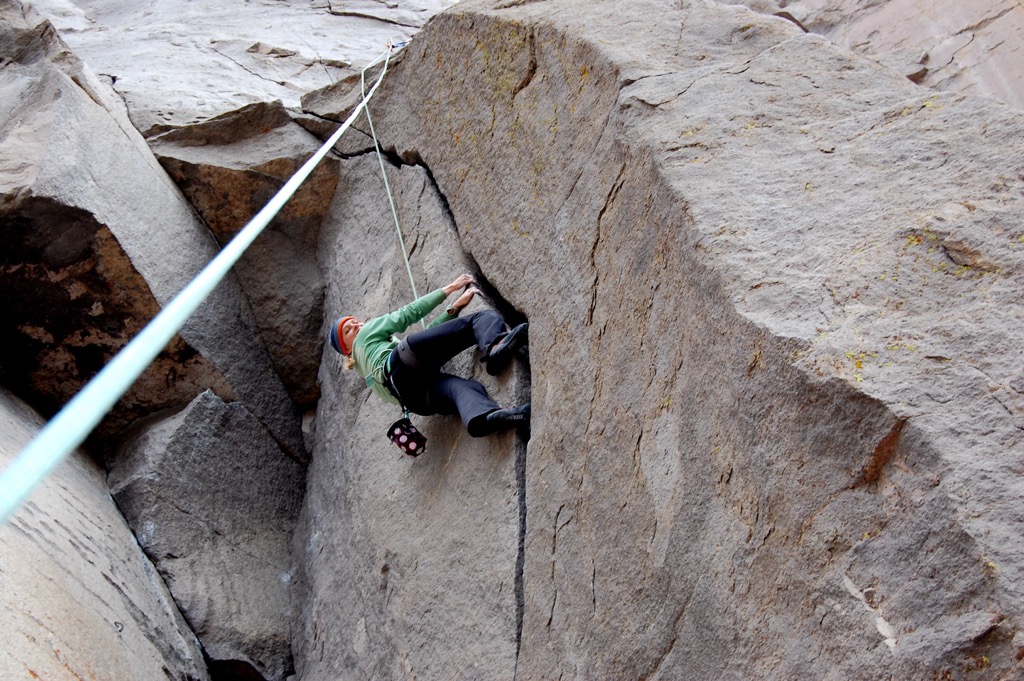A Beginner’s Bible
By Sergei Poljak
Rock climbing is not a new sport. Its predecessor, alpine climbing, has existed to some extent since the dawn of man’s curiosity. As technology and leisure time ballooned in the 19th century, climbing became more technical. The rubber on the bottom of climber’s boots became higher quality, and the shape of the footwear began to evolve. Climbing rope became more robust, allowing climbers to take falls without incurring serious risk.
All of these developments occurred over centuries, but the greatest period of development was from the 1960s to the 1980s when climbers invented modern protection, climbing shoes, Dyneema slings, and dozens of other components integral to increasingly serious climbs.
Even as free climbers scaled the world’s great, technical walls throughout the latter half of the 20th century, climbing remained the relatively obscure pastime of a few daredevils. That changed with the advent and overwhelming popularity of sport climbing and climbing gyms. Gym climbing opened the sport to a whole new audience; in many cases, climbing at your local gym is more affordable than going to a movie, even without a membership. Another monumental shift occurred with the critical and commercial success of the movie Free Solo. Climbing has always had a history of documentation through film and books, but nothing has ever received as much attention as Free Solo. The film opened up climbing to an entirely new generation of future rock-smiths.
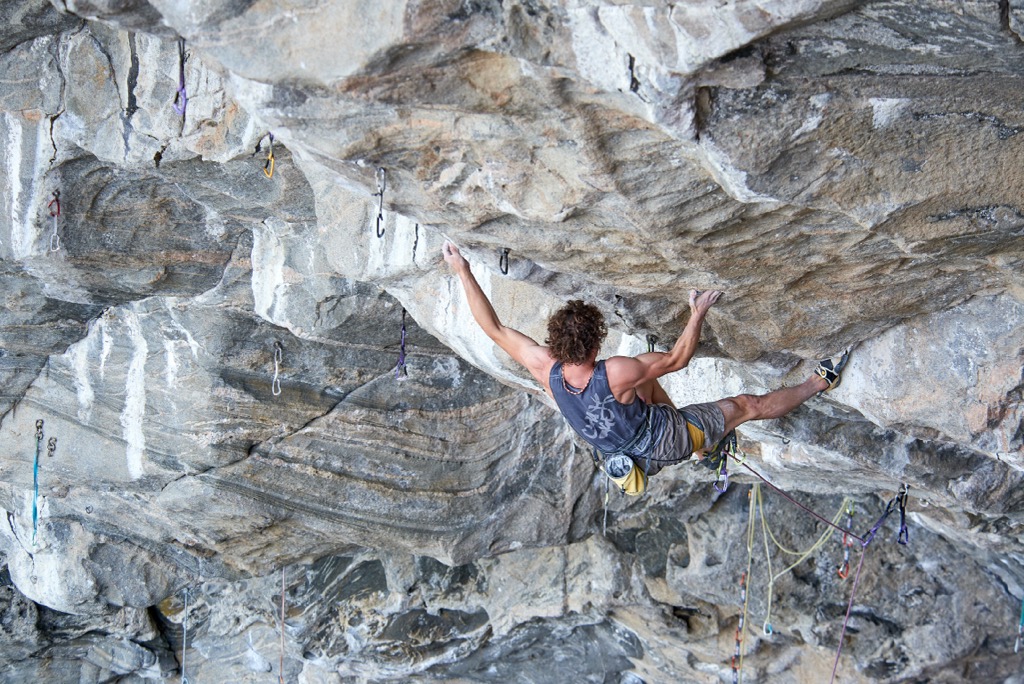
Why Start Rock Climbing?
Hardened climbers often harken back to the good ‘ole days, before the days of Mountain Project, social media, or lineups at the base of popular climbs. However, from a beginner’s perspective, there has never been a better time to start climbing. There are dozens of reasons why this is the case. Here are a few of the most important.
- Gyms: Whether you love ‘em or hate ‘em, gyms have opened up the sport of climbing to a massive audience. It may not be real climbing, but it’s definitely something that requires a lot of skill. Even the best climbers in the world train at the gym. They are ideal for beginners because you can climb with zero gear and easily rent shoes and chalk at the gym. And if you decide you like it, all you have to buy are shoes and a chalk bag. You literally don’t need anything else (for bouldering gyms, at least).
- Routes: New routes are added every single day in regions all over the world. There are hundreds of thousands of climbs, many of them well-bolted with anchors. As of writing, there are 310,480 routes on Mountain Project, suggesting that there may be over half a million routes in total at this point. As climbing becomes more mainstream, it’s only a matter of time before we hit a million. And with apps like Mountain Project, tracking down the classics has never been easier.
- Gear and Safety: Technological advances have brought modern climbing gear that changes the game for performance, comfort, and safety. Sticky rubber on modern climbing shoes. Spring-loaded camming devices (SLCDs). Dyneema slings. Dynamic ropes. Assisted-braking belay devices (ABDs). Not to mention standards for bolting and maintaining existing bolts at established climbing areas. All of these advancements make it more ideal than ever to start climbing.
- Partners: It’s difficult to climb alone. Bouldering gyms allow you to climb solo, but even outdoor bouldering often requires spotters. Some rope gyms have auto-belay systems set up, and there are complex self-belay systems you can use on rock. But it’s safe to say that climbing is a team sport most of the time. Now, it’s easier than ever to build a team. Moreover, auto-blocking belay devices have made trusting a belay buddy far less of a concern than it once was.
- Access: Access is a big deal in the climbing world. Climbing takes place on cliffs, and cliffs occupy land. Land is subject to designations. You’ve got private land and public land, national parks and state parks, national forests and state forests, and the list goes on and on, depending on your country. Moreover, many climbing areas require an access trail. This access is sorted out by dedicated individuals and organizations at both the local and national levels. It’s an ongoing battle, but it seems like more access is gained each year than lost.
- Instruction: Looking to get on the fast track to becoming a better technical climber? These days, you can find a highly qualified instructor at your nearest climbing gym. It’s also easy to find AMGA-certified guides in pretty much any place with significant climbing. Because we now have a stringent standard for certification, you can be assured that your guide will be able to fine-tune your technique. For climbers on a budget, you’ve got YouTube University, where you can find instruction on any technique you can imagine.
- Modern Medicine: This one seems a stretch, but hear me out. Orthopedic medicine has come a long way. Injuries that could leave you handicapped for life 50 years ago are now routine surgeries. Here’s an example: seven years ago, I broke my elbow in a ski accident. It was a nasty injury where I dislocated the elbow, fractured the radial head, and tore all the ligaments. It’s dubbed the “terrible triad of the elbow” because, historically, the outcomes for this injury were, well, terrible. “If this had happened in the 80s,” my surgeon explained to me, “your arm would be stuck like this for the rest of your life.” He made a gesture like a chicken wing. Now, that sent chills down my spine. So much for all those old-timers telling you how good it was back in the day. Today, the elbow is not great, but you couldn’t tell it was injured unless I pointed it out to you. As I see it, today’s medicine allows us to push ourselves in sport with far less chance of a permanent handicap.
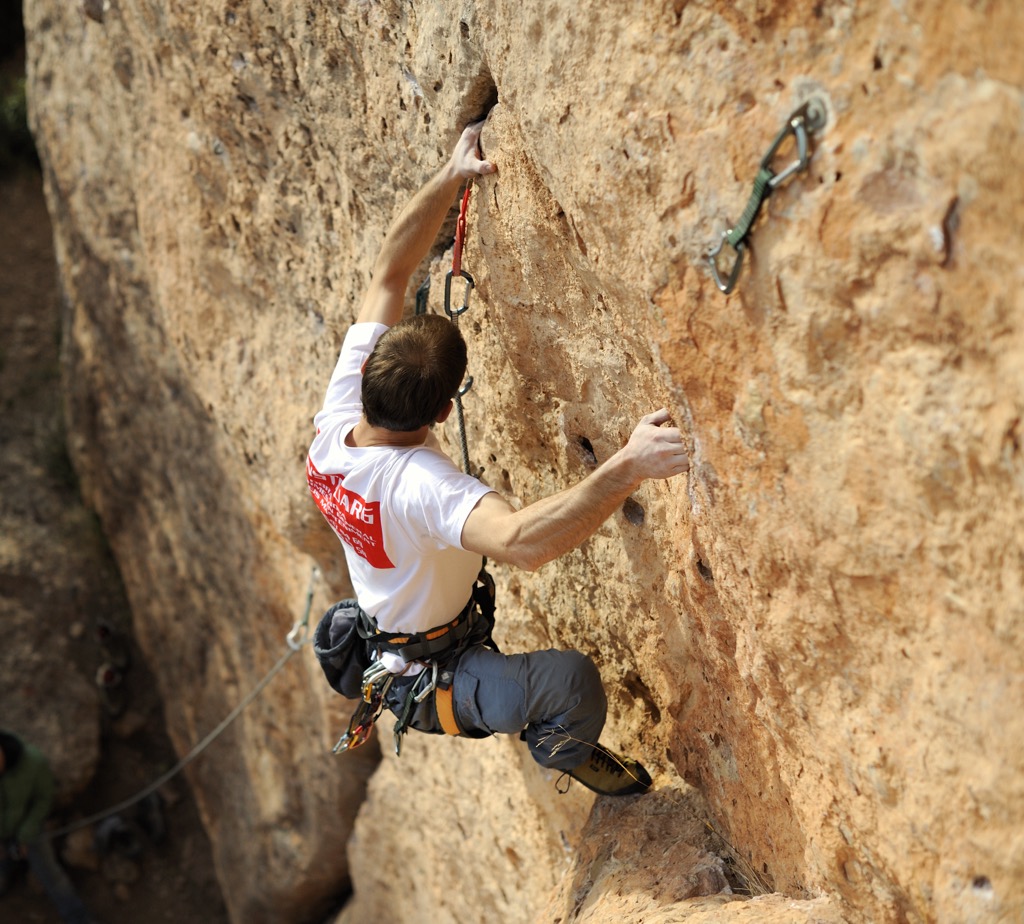
Benefits of Climbing
Physically, climbing makes you strong in a way that few other sports do. It’s a full-body sort of strength. Rather than bulging, muscles become lean and sinewy. Movement becomes more fluid. Flexibility increases. The spine straightens. Bodily pains associated with the poor posture of our sedentary, seated world fade and are forgotten. Even constipation is relieved. Maybe intensive commitment to yoga does the same? Pilates? From my experience, if there ever was a miracle drug, climbing is it.
Emotionally, climbing will take you to places you’ve never been before. You can experience visceral fear like you may have never experienced before in this cushioned modern world, especially once you start leading. You can experience the reward of using only your body and mind to move past that fear. You may discover the joy of discovering yourself.
Spiritually? The verdict on this one is still out. Climbing can give perspective on man’s minute presence amongst the giants of the Earth. Meanwhile, other folks may become obsessed with that feeling of victory, craving more and more dangerous climbs, ultimately leading to their demise.
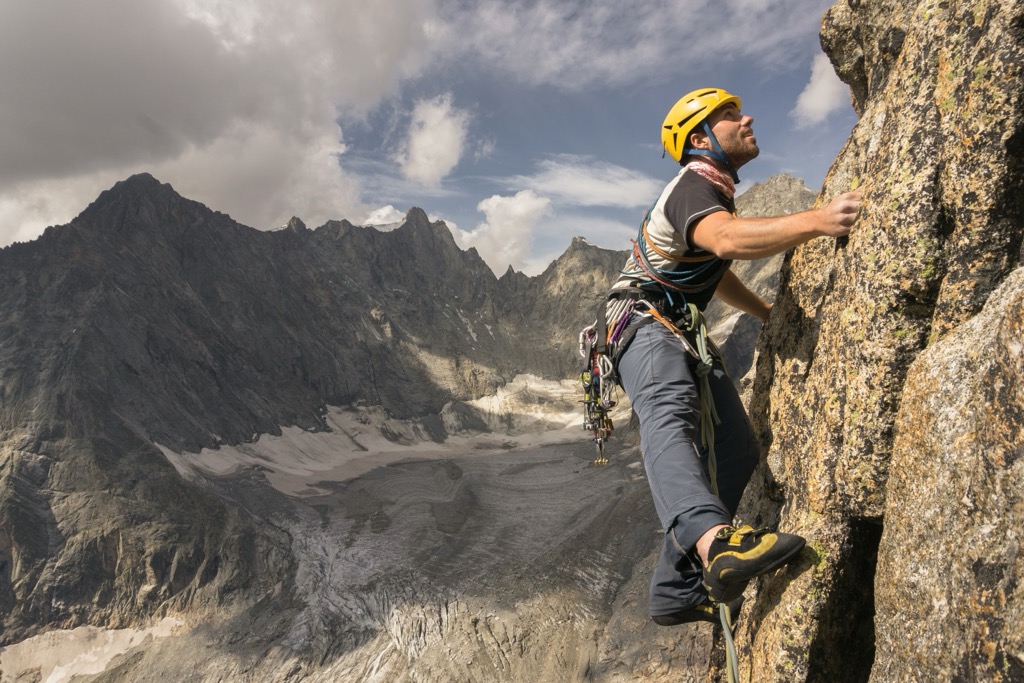
How to Climb Safely
If you mention rock climbing at the dinner table, most people unfamiliar with the sport would think it dangerous. And climbing indeed has inherent danger. However, as long as safety protocols and checks are followed according to standards, climbing is reasonably safe from a fatality perspective. This is from a beginner’s standpoint, assuming you’re not free soloing or doing other sketchy stuff.
Of course, climbing can be as dangerous as you want it to be. You can climb without a rope or commit to leading with a rope but with only scant protection. There are a lot of ways to choose to make climbing more dangerous for the experts out there.
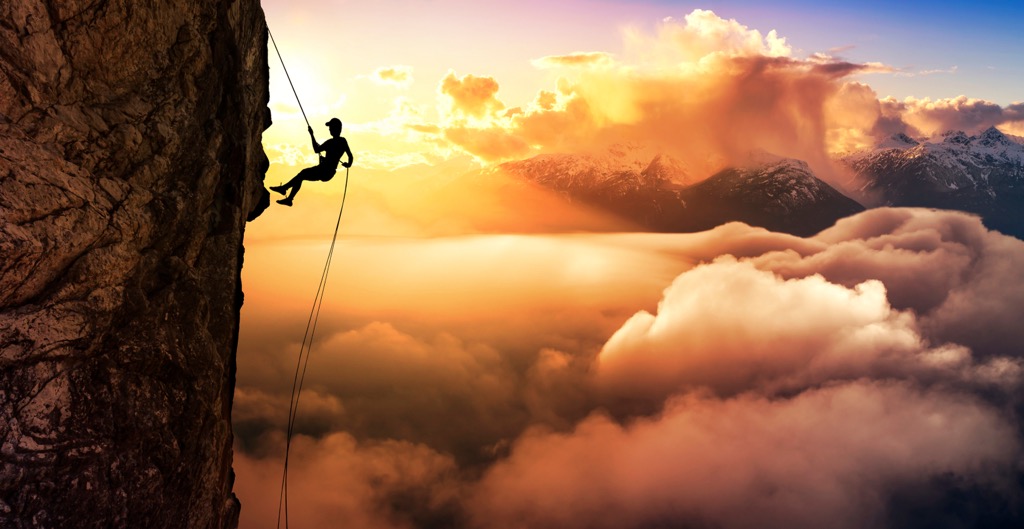
As a disclaimer, you should always take a class to dial in the exact processes for single-pitch, multi-pitch, sport, trad, or whatever other type of climbing you’re doing. For this article, I’ll just discuss a few of the more common mistakes.
“A golden rule of climbing is to always remain mentally and physically alert, and not to let carelessness interrupt your pleasures. Climbing can be the world’s most thrilling and pleasurable sport, but it can also be most disastrous. Remember to take nothing for granted.” Fred Becky
- Rappelling: Rappelling is the most common cause of fatal climbing accidents. Specifically, most fatal accidents occur by rappelling off the end of the rope. Free solo prodigy Brad Gobright, who died in 2019, is the latest high-profile death in this type of accident. Gobright was one of the brightest young climbers in North America.
Rappelling is very easy and necessary once you start climbing regularly. However, following safety standards is essential because the simplest mistake often results in falling off a massive cliff. The first thing is always to tie knots at the end of your rope. Why do great climbers still neglect to do this? It takes more time and can cause the rope to get stuck if you forget to untie the knot before pulling it. It’s not worth your life to take a shortcut. Just tie knots at the end of your rope.
The second most crucial protocol is backing up your rappel with a “third hand,” a knot (autoblock, prusik, etc.) that will catch you if you let go of the rope for any reason. Don’t take shortcuts; always use a third hand.
Obviously, you must double and triple-check your setup before committing to any rappel. Also, don’t use YouTube or the internet to learn how to rappel. You must learn on-site with an instructor or experienced climber.
- Knots: You must tie into the rope every time you climb, generally with a figure-eight knot. Always double and triple-check your knot with a partner. Another thing to note is that your knot goes through the two designated loops on your harness, not the belay loop.
- Belaying: Belaying accidents were historically more common. However, assisted braking belay devices (ABDs) have largely mitigated the potential for disaster. With these new devices, such as the Petzl Gri-Gri, the rope will hold a climber even if the belayer loses control of the device for some reason.
Compare that to the hip-belay of the original climbers; even if the belayer could adequately hold a lead fall, they would have a gnarly rope burn across their lower back.
I recommend always belaying with an assisted braking device. Nevertheless, we always keep our hands on the rope as if there were no assisted braking. It’s crucial to note that device mismanagement can still cause accidents. You must receive instruction and practice with your ABD to understand how it works before belaying.
Belaying requires responsibility because your partner's life is in your hands. They are already cruxing out on lead and deserve to be absolutely sure of your belay.
- Locking Carabiners: Locking carabiners are standard in climbing for everything from anchors to belay devices. They are bombproof; once your carabiner is locked, you don’t have to worry about it. The crux is remembering to lock them. So always double-check!
- Change Soft Goods Every Five Years: Hardgoods such as carabiners, cams, and belay devices can last for decades, but Dyneema gear like slings, harnesses, and the linkages on cams and quickdraws should be swapped every five years. Most climbers I know wait longer (you don’t want to be the guy with all the new gear at the crag), but eventually, the gear will fray and be more likely to result in an accident. Todd Skinner, one of the most legendary climbers in history, pioneered first ascents and hard free climbs across the world. He survived it all but fell to his death in 2006 after the belay loop on his harness snapped on a rappel.
- Placing Protection: Many climbing accidents occur during falls where protection fails. In sport climbing, the two most common mistakes are backclipping and z-clipping.
In trad climbing, the gear placements are far more complex. Learning to properly place gear requires instruction from a professional or a knowledgeable and patient friend (or friend group).
Trad climbing is inherently more serious than sport climbing. Even experienced trad climbers place imperfect protection. These pieces sometimes fail. I’ve personally witnessed a trad placement blowing three times. The most severe climbing accident of anyone I’ve known personally occurred when a series of trad placements blew out, resulting in a ground fall from over 10 m (33 ft). The friend, who was a highly experienced and talented climber, is now paralyzed. Conversely, while I’ve heard of bolts occasionally failing, I’ve never witnessed this in real life or known anyone who had an accident from a bolt failure.
Trad climbers must also be stronger to climb at similar grades. Fiddling with pro throughout a climb takes significant energy. Extending protection with slings is often required, meaning a fall will be longer. Sport climbing is ideal for those trying to push their grade; you can safely take dozens of falls while projecting a climb. However, I wouldn’t say the same about trad climbing. A perfectly placed trad piece is just as secure as a bolt, but it’s hard to know for sure if a placement is bomber. Pieces can wriggle out. In sandstone, rock exploding apart is the most common cause of failure. Generally, climbers stick closer to their grade on trad climbs unless they really know the protection.
Even advanced climbing doesn’t necessarily require complex systems. However, these systems must be implemented correctly every time. Double and triple-checking your systems must become habit early on in your climbing progression to avoid accidents.

The Gym Vs. Outdoor
Climbing gyms are responsible for much of climbing’s trajectory into the mainstream. Some outdoor climbers look down on the gym as an asylum for city folk, but that’s a pretty unfair perspective. Gyms have their own distinct advantages, especially for the budding climber. Here are some advantages of the gym:
- Affordability. You don’t need much gear, and the membership fee is usually reasonable.
- Ease. You can show up at the gym and crank out dozens of routes in a very short time. The gym experience always ends in an intense arm pump with very little time invested.
- Weather. Temperatures, raindrops, snowflakes, seasons, winds, lightning bolts…they mean nothing at the gym. It’s a year-round venue, and many gyms are even open around the clock to members.
- Routes. Gyms have improved with route design and continually rework their routes, whereas the crag will always remain the same.
- Partners. The gym is a great place to meet other folks.
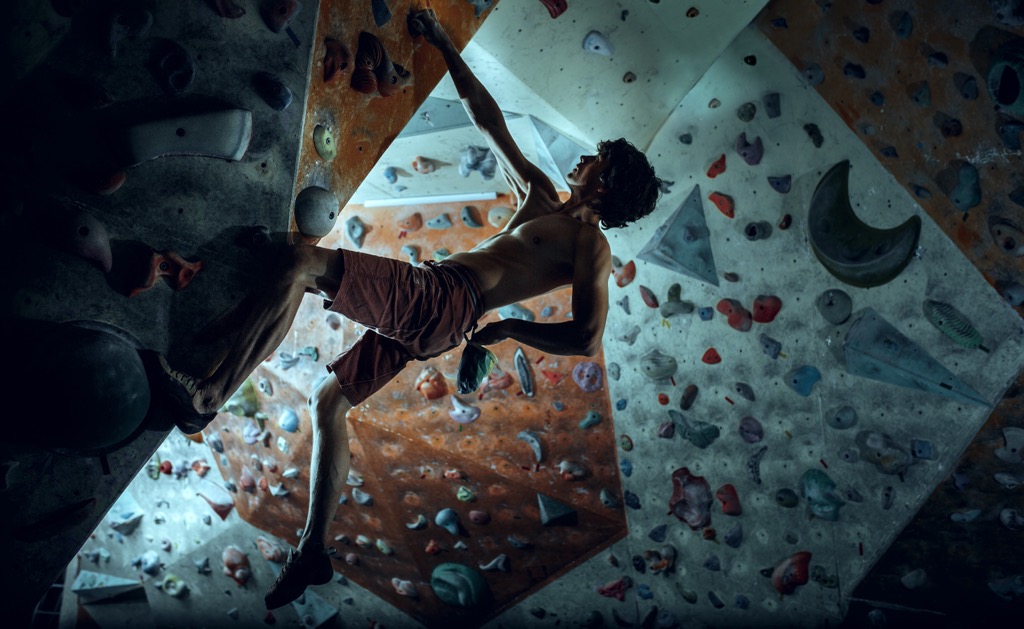
Still, every gym climber should make an effort to foray into the outdoors. Gyms are crowded, dirty (wash your hands after gripping those holes with everyone else), and full of chalk dust. More importantly, they are limited. You’ll never be able to have the adventure that legit rock climbing can offer.
From a climbing perspective, climbing on rock is far more complex. Whereas gym climbs are often based around power, problem-solving is central to rock climbs because you can’t see precisely where the holds are like you can in a gym climb.
Climbing on rock means you're surrounded by beautiful nature, sometimes in remote places. To say the fresh air, mountains, and natural landscapes are inspirational is an understatement. I don’t climb at gyms regularly, so I don’t know how deep the culture runs, but I think it’s primarily beginners who exclusively climb at gyms. Dedicated climbers eventually move on to rock climbing and use the gym as a means to an end to train for rock climbing (albeit a fun means to an end).
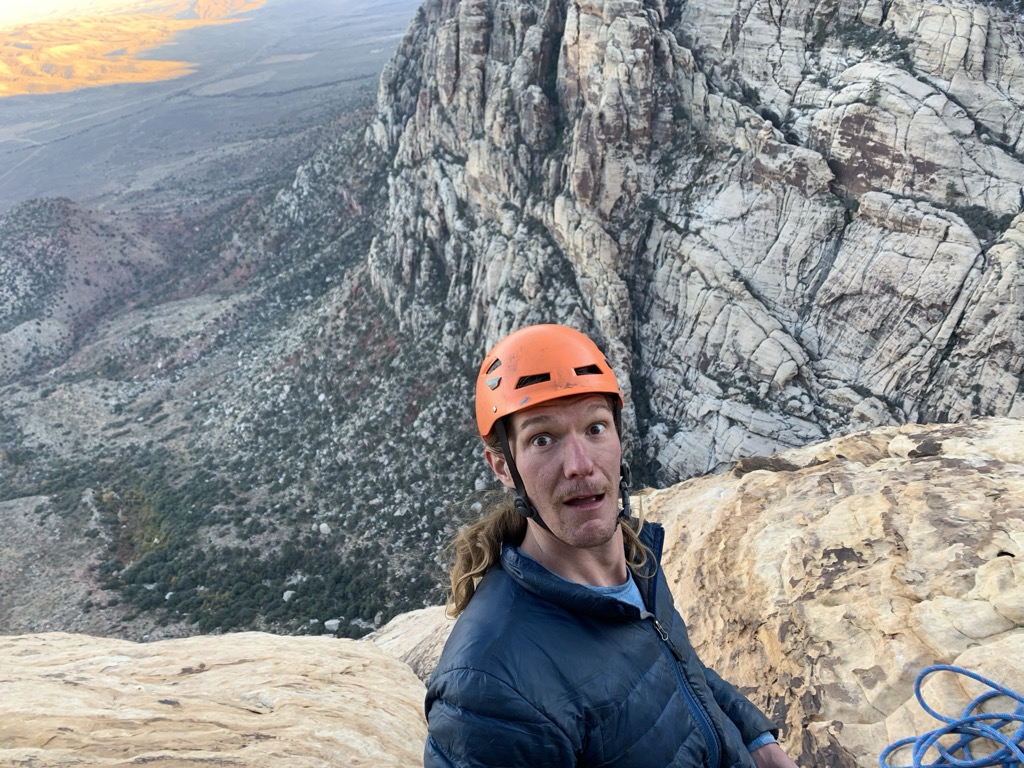
There are a few downsides to climbing on rock, however. First of all, it’s more dangerous. Even if you exercise every precaution, the mountains can throw you a lemon, whether it’s rockfall, weather, ticks, poisonous animals, or any number of other hazards. Another notable disadvantage is that rock climbing requires a tremendous amount of prep. You have to drive to the crag, find a climb, flake your rope, sort out your gear, put your harness and shoes on, and double-check everything. Even then, you only climb half the time and belay the other half. A third disadvantage is that rock climbing is very seasonal and weather-dependent.
Top-Rope vs. Sport Vs. Trad
Top roping involves the climber being attached to a rope that runs through an anchor at the top of the route and back down to the belayer. It’s the safest and easiest way to climb. You don’t have to stop and place gear, and if you fall, the rope will immediately catch you.
Top roping is really the only way for a beginner to start climbing. It’s much less committing than leading, allowing new climbers to get a feel for movement and trust for the rope and the systems. Even expert climbers will hang around on top rope on some projects. There’s a quote, “Never pass up a good top rope,” that will always hold true.
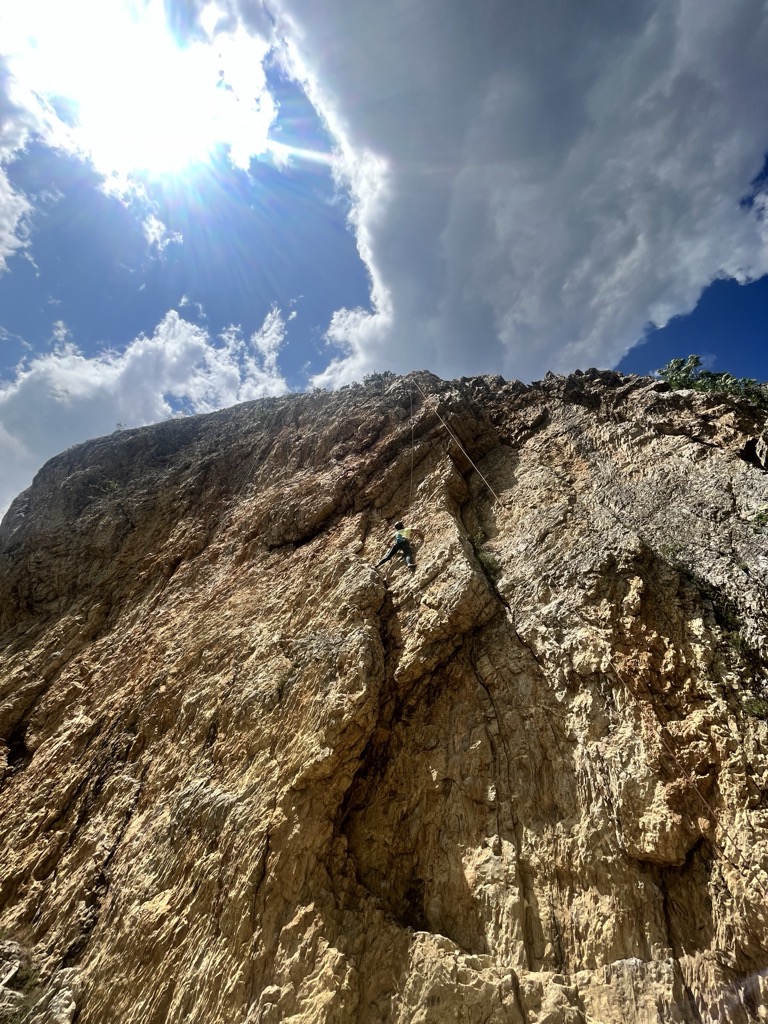
Sport climbing is where the leader uses quickdraws to clip into permanently bolted hangers for protection while ascending a route. Unlike top roping, sport climbing is free climbing, meaning gear can only be used to protect the route, not to aid with climbing. The highest-graded climbs in the world are sport climbs (currently Silence 9c / 5.15d, put up by none other than the legendary Adam Ondra).
Yet, sport climbing is great for beginners, too. Sport climbing involves a leader and a follower. The leader climbs first, placing quickdraws at each bolt and clipping the rope to protect against a possible fall. It’s better to have a friend lead at first.
Following the leader and cleaning the climb is just like top roping, but with small pauses to allow for the removal of the quickdraws. You can get a feel for the stances required to remove a hand and fiddle with gear. If and when you decide to start leading, starting with sport climbing is much easier. The gear is far cheaper and less taxing and dangerous to place on the rock.
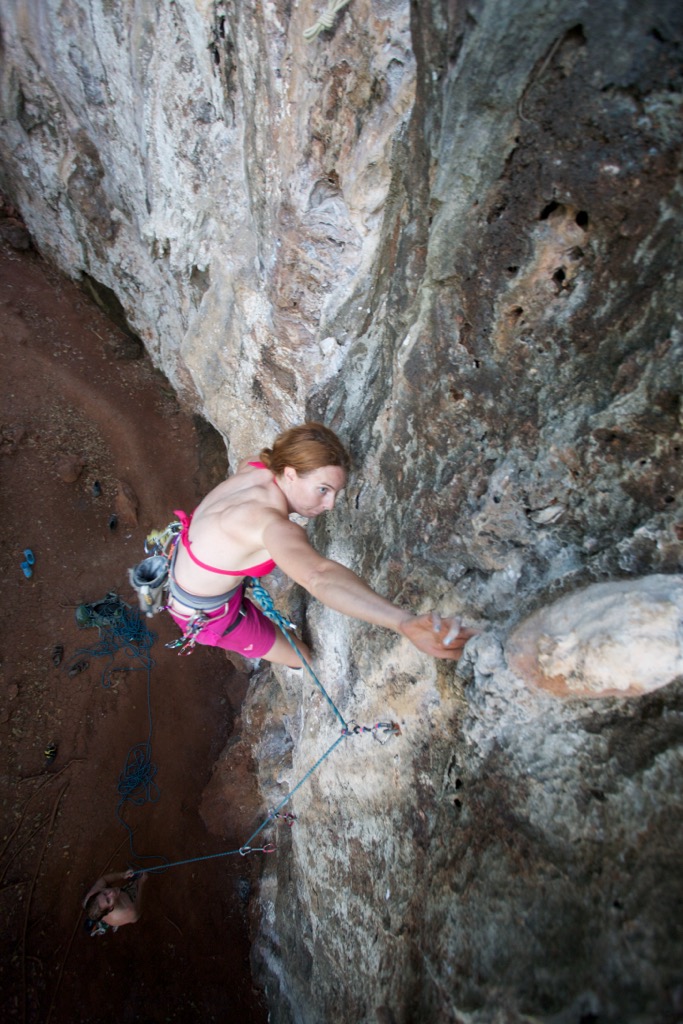
Traditional (trad) climbing is similar to sport climbing in that it involves a leader and a follower, with the leader placing protection as they ascend the route and the follower cleaning said protection. However, trad climbing protection doesn’t involve fixed bolts but rather temporary protection. The most common type is spring-loaded camming devices (SLCDs), better known as cams. There are also nuts, tricams, pitons, and even slings that you can hitch over rock features.
Because trad climbing protection must be slotted into cracks in the rock, trad routes follow cracks or crack systems, sometimes for thousands of meters up a rock face. It’s a totally different style than sport climbing, which follows holds on the surface of a rock face. You could be an expert sport climber and still return to a complete beginner trying to jam your way up a featureless crack.
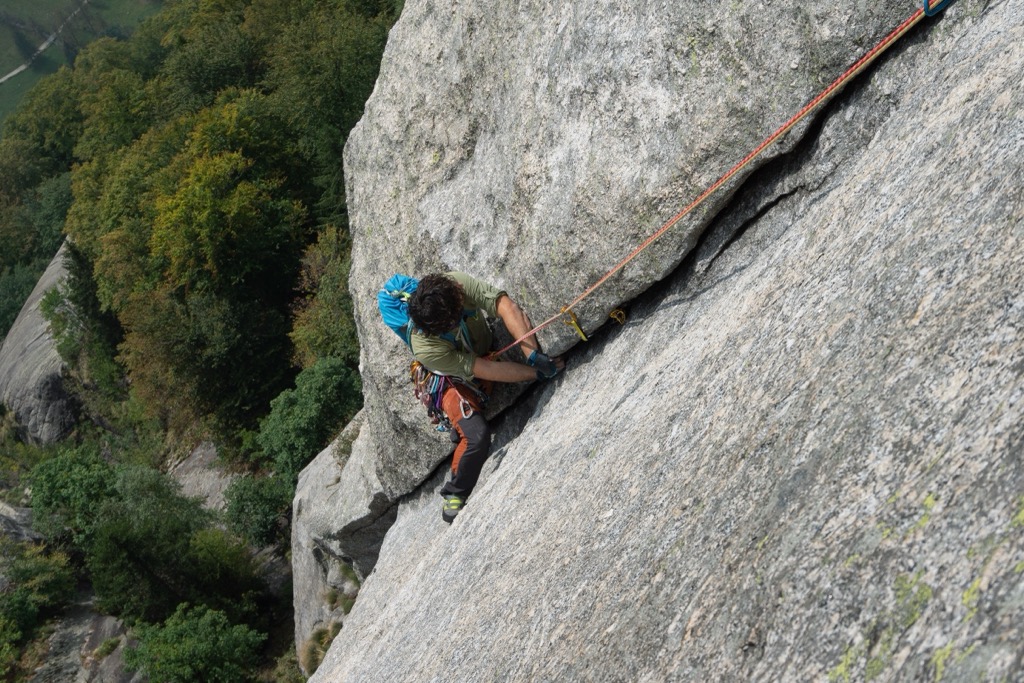
Trad climbing is riskier than sport climbing, primarily because placing your own protection in cracks and natural rock features is much more complex than simply clipping a bolt. When done right, these pieces are bomber. But even the best climbers don’t place bomber pro every time. Sometimes, the route doesn’t even allow for it. It’s common to have natural run-outs with no cracks to place pro. That means you are climbing high above your last piece and will take a long fall if you come off the rock.
Despite the risks, most climbers regard trad climbing as the purest form of rock climbing under free soloing (you could also make a case for bouldering). Trad is the ultimate puzzle. You have to continually figure out how to protect yourself as you ascend. It’s just you and the rock, so trad requires route-finding skills, whereas in sport climbing, you can just follow the bolts and not think about route-finding holistically.
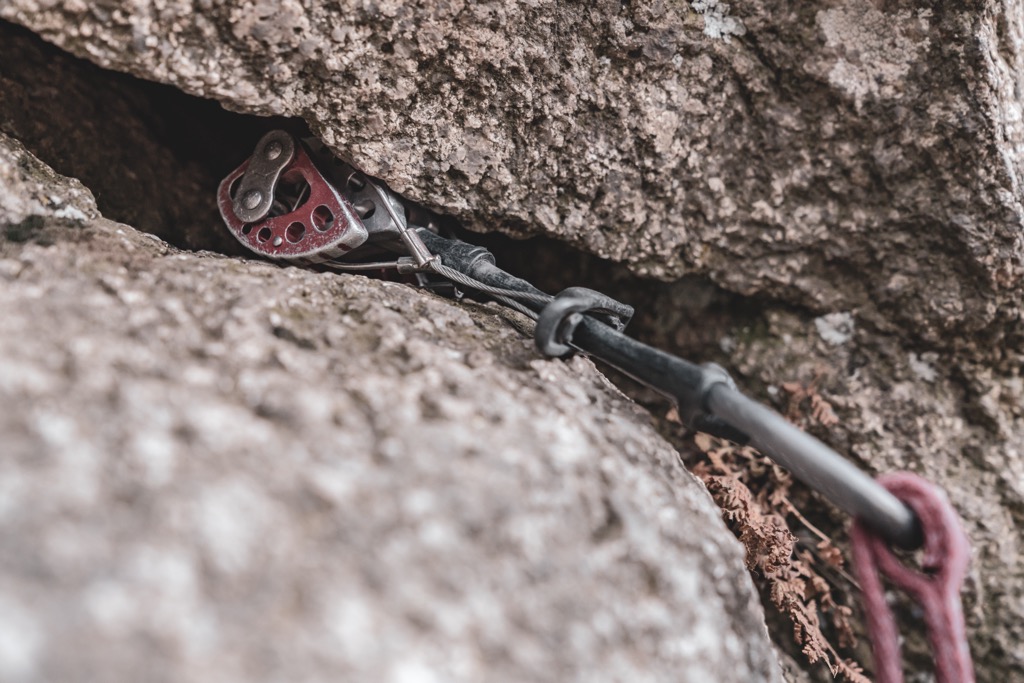
The Gear
Climbing has one of the lowest barriers to entry of any sport from a price standpoint. As a beginner, you don’t need much more than shoes, a harness, and a chalk bag, which can all be acquired for under USD 200. I also recommend a helmet for any type of rope climbing.
For a full-on leading sport climber, the gear is likely less than USD 600 or 700. Trad gear can get pricey, but for every piece of climbing gear you could ever need, trad and sport together, you’ll spend less than a full-suspension mountain bike.
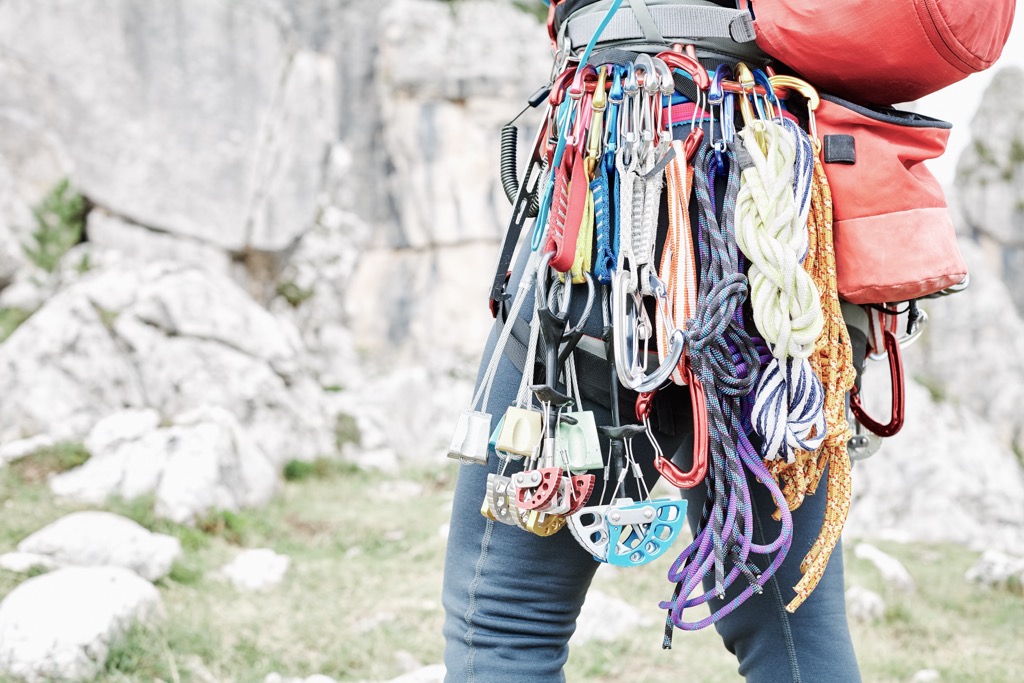
Climbing Shoes
Picking the right climbing shoe is vital for beginners and experts alike, but for different reasons. Beginners need a comfortable and affordable shoe, whereas experts require an aggressive, performance-oriented shoe that often sacrifices comfort.
Beginners will look for a shoe with a neutral position, meaning the toe is not “downturned” like a ballet shoe. Another factor will be laces vs. straps. A beginner may want to go for straps to make taking a shoe on and off as seamless as possible. One example is the La Sportiva Tarantula. Whatever you do, don’t get an aggressive, downturned shoe as a beginner! They're designed for expert sport climbers looking for pinpoint accuracy on tiny holds, but they are also very uncomfortable and unnecessary unless you're climbing high grades.
For trad climbing, look no further than the TC Pro (TC stands for Tommy Caldwell, a famous American trad climber). It’s burly around the foot and protects the ankles, perfect for jamming into cracks. It’s also comfortable.
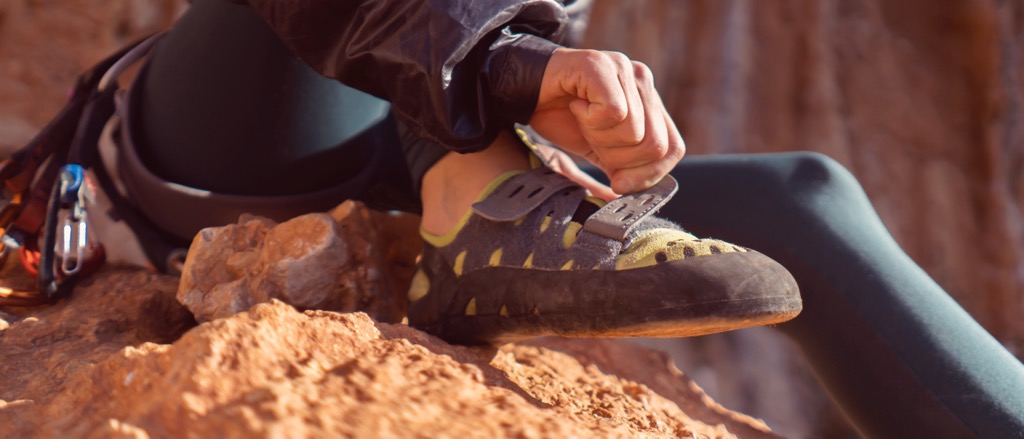
Harness and Assorted Tackle
Every rock climber needs a harness. Beginners should prioritize comfort over other factors. At first, you’ll likely spend a lot of time dangling around on a top rope, and an uncomfortable harness could turn you off from climbing.
Chalk bags are also necessary. Any old one will do, but make sure you have one because climbing without chalk is more difficult.
As I mentioned, you only need shoes, a harness, and chalk to get started on top rope. Next, you’ll want to buy your own belay device and learn how to use it. As I’ve mentioned, you should invest in an ABD like a Gri-Gri. It’s just so much safer. You’ll also want to invest in an anchor setup to attach yourself at the top of a route to follow single-pitch climbs. These can take several forms.
There are a few other things you’ll need to start leading. Five to ten quickdraws should work to start, and ten to twenty if you get serious. A rappel device. A piece of cordelette to back up your rappel. Three to five locking carabiners. A dynamic rope (go with the 70 m; they will reach on almost all single-pitch routes, and it’s worth the extra weight to carry them).
When it comes to trad and multi-pitch climbing, there’s a boatload more gear that we won’t discuss in this article.
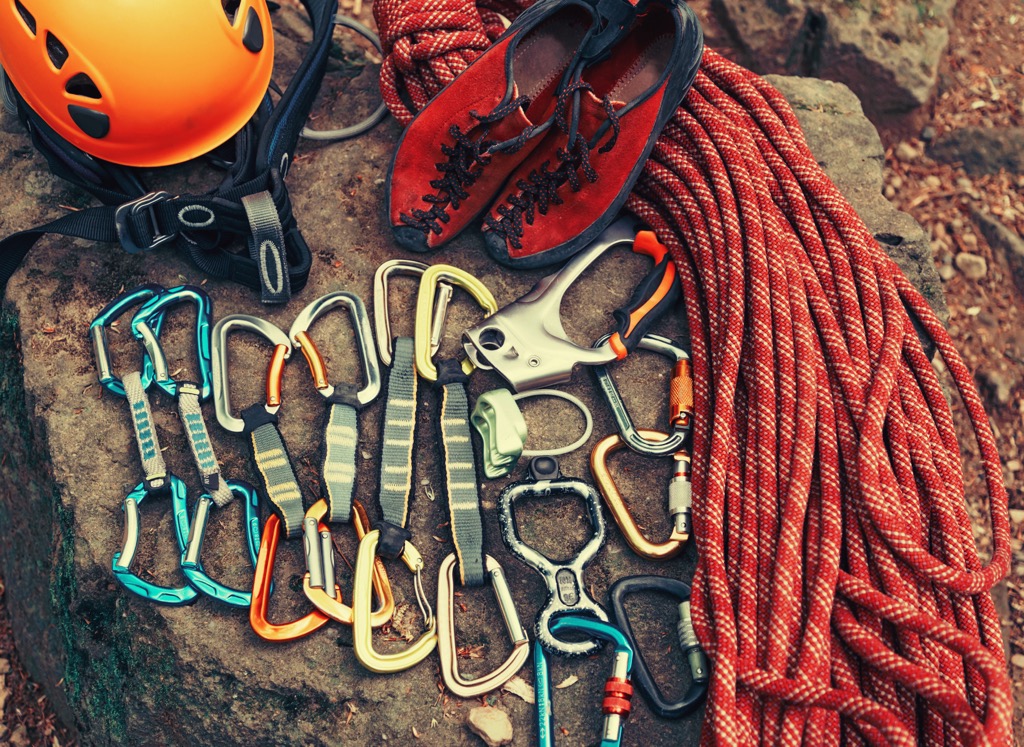
What to Wear
There’s no dress code for climbing, but I have a few recommendations for clothing. First, you should wear a helmet, especially for outdoor climbing. Rockfall is common; even a small rock can injure an unprotected head.
I recommend pants or tights for the legs. I’m tall (and not an elegant climber), so I constantly scrape my knees and legs against the rock.
Many climbs require an approach, so it’s important to bring sneakers. For a more serious approach, there are fancy “approach shoes” with sticky rubber on the bottom, like climbing shoes (some guides actually lead easy routes in their approach shoes for maximal comfort). For a single-pitch day, I always throw a pair of flip-flops in my pack to wear between climbing so I don’t have to put my shoes back on every time.
Taping the hands can prevent tearing off the skin and causing painful sores called “gobies” when crack climbing.
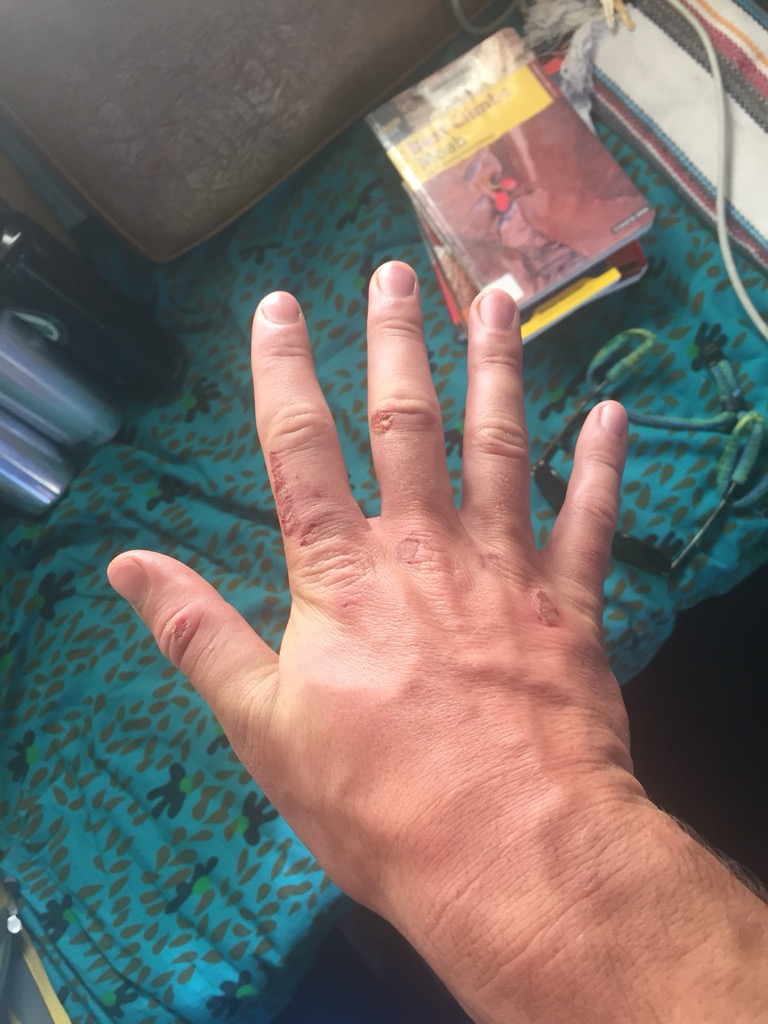
Where to Climb
As a beginner, you will most likely climb at the local gym or crag—it’s unlikely to be a world-famous spot. Tens of thousands of established crags exist worldwide, and even lifelong climbers will never hear of most of them.
As a beginner, you should seek out the best climbing that’s closest to your home and therefore allows you to climb the most. However, you should also know about the “promised lands” for climbing, those places which are considered the best in the world.
It’s likely because the potential climbing areas have been more developed here, but North America and Europe are by far the top two continents for climbing. North America is generally a trad paradise, whereas Europe boasts limestone sport climbing.
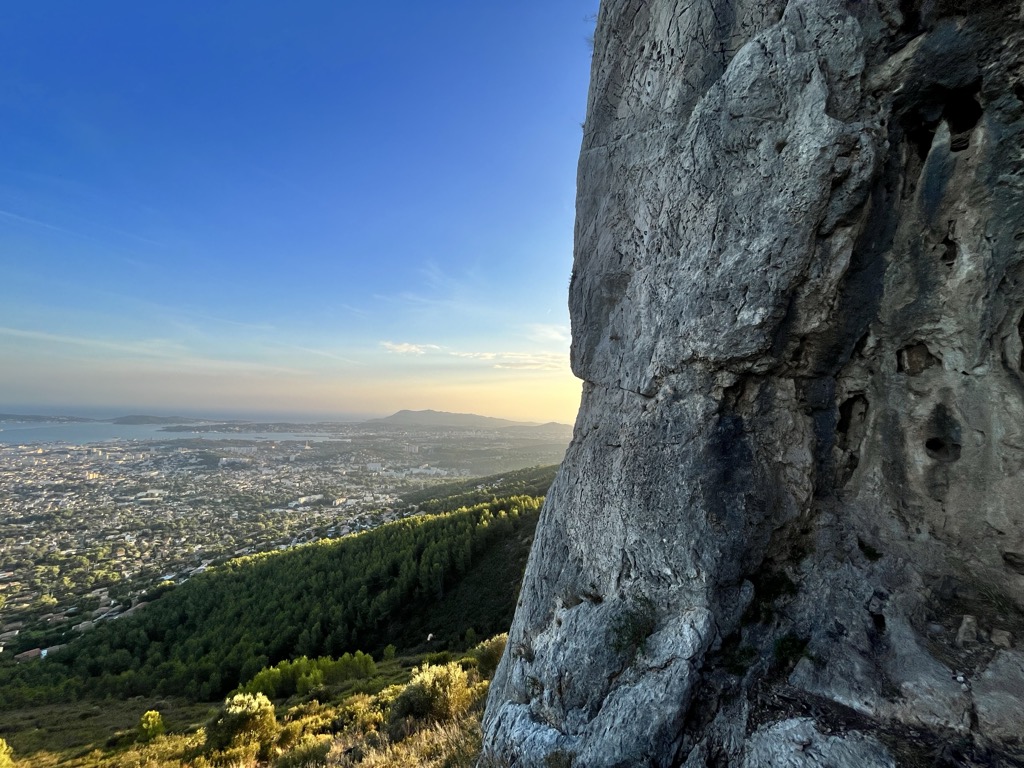
North America
West Coast
The adage “West Coast, Best Coast” holds true for granite trad climbing. You could start in Joshua Tree National Park and work your way north: Tahquitz, Yosemite, Lake Tahoe, Leavenworth, Index, and Squamish are among the best in the world. Smith Rock, Oregon, is about halfway between Lake Tahoe and Index and gets an honorable mention, although it’s all sport climbing here.
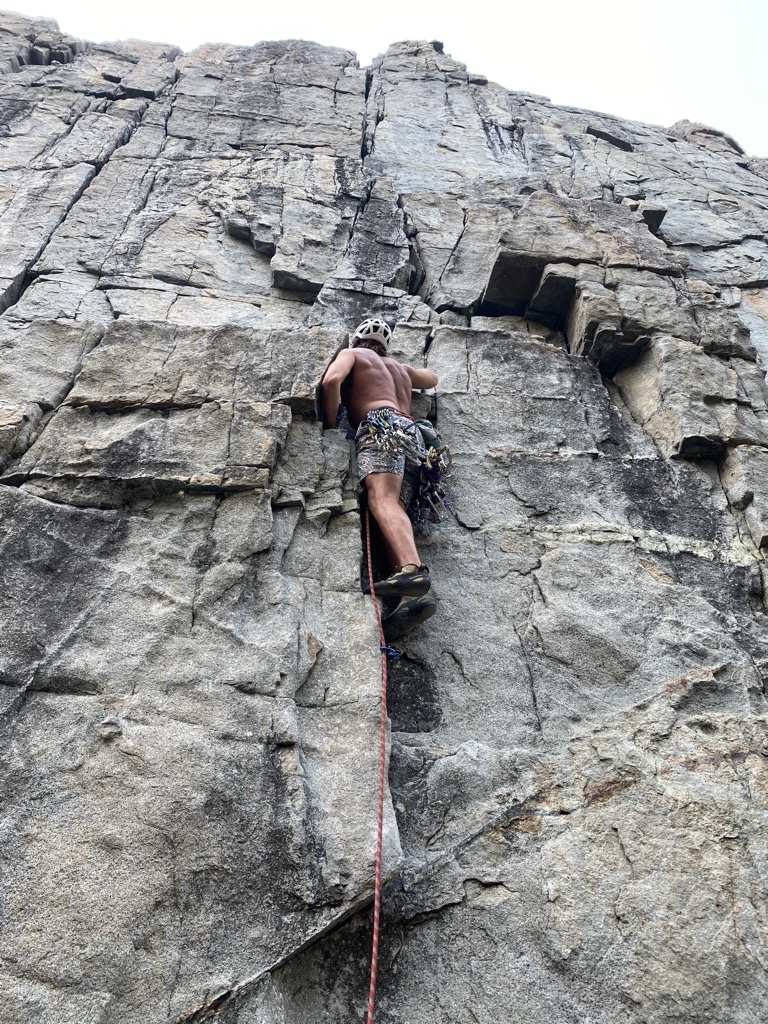
American Southwest Desert
The sandstone empire of the American Southwest offers the world’s most unique trad climbing. Red Rock National Conservation Area is the Yosemite of the desert. Indian Creek and the surrounding Moab area feature thousands of featureless splitter cracks. Maple Canyon outside of Salt Lake City has thousands of sport routes. City of Rocks, Idaho, has hundreds of shorter trad routes.
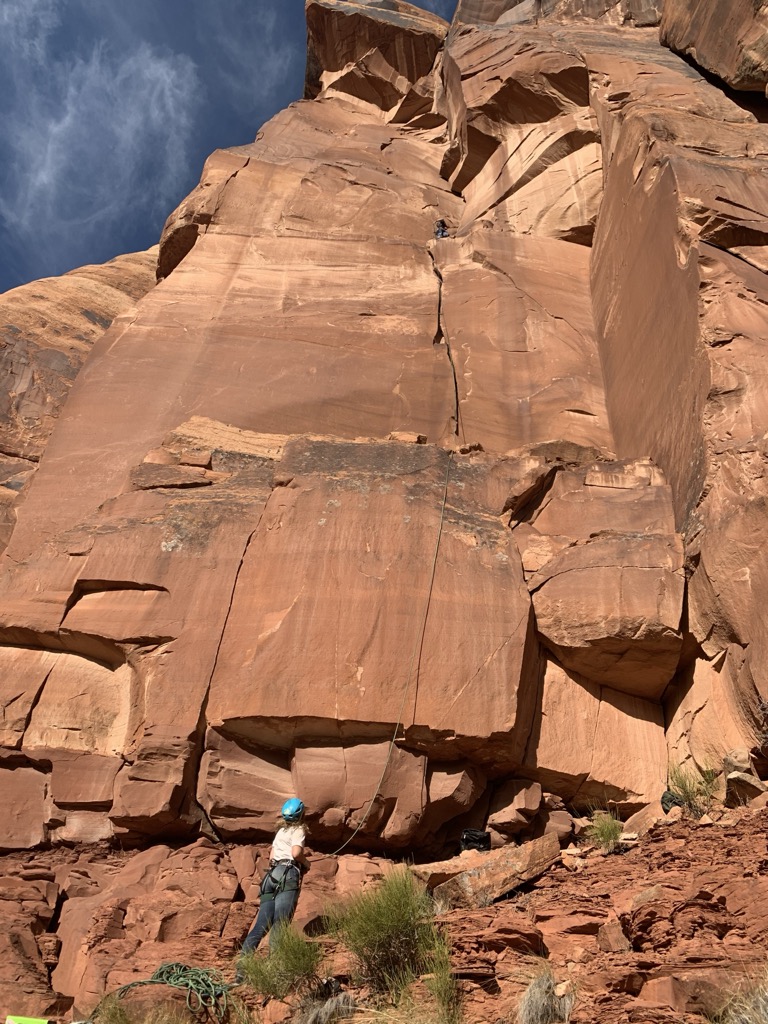
Rocky Mountains
The Rockies are peppered with legendary zones from Mexico to Canada. Potrero Chico, Mexico, is a legendary destination for sport climbing during the North American winter. Shelf Road near Salida, Colorado, offers sport, and Boulder, CO, has thousands of trad and sport routes. For moderate alpine trad routes, the central to northern Rockies are some of the best: Longs Peak, Colorado, Cirque of Towers, Wyoming, and, best of all, the Bugaboos in British Columbia.
American East
The East offers a surprising density of smaller climbing areas. For example, you wouldn’t believe how much climbing there is in my home state of Connecticut, but you would have never heard of it as a destination. The famous spots include the Red River Gorge, Kentucky (limestone sport), the New River Gorge, West Virginia (granite trad), and the Shawangunks (granite trad).
Europe
The U.K. Peaks District is legendary, and many early alpinists hail from here (think George Mallory).
For the rest of Europe, think mainly limestone. The French and Spanish Pyrenees are home to thousands of limestone sport routes. Mallorca features limestone deepwater soloing along the coast and more limestone inland. Corsica is less explored and has lots of granite. Finale Ligure has plenty of limestone sport. Fountainbleu near Paris is one of the world’s great bouldering destinations.
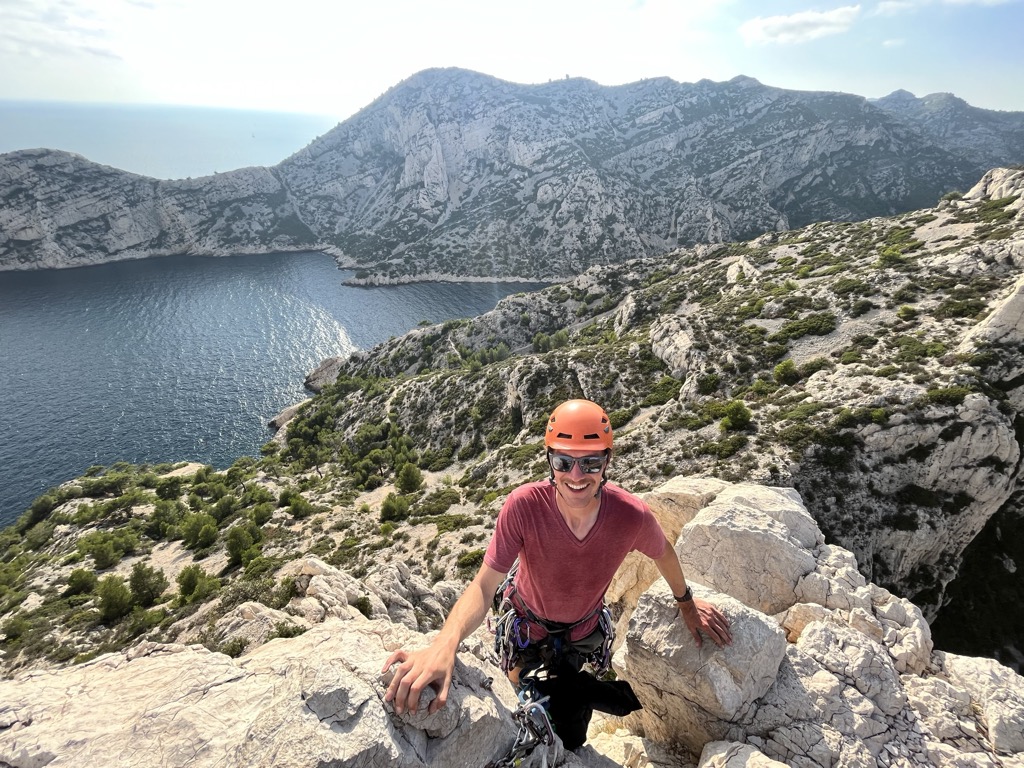
Alps
Of course, the Alps have the greatest concentration of quality zones. The Verdon Gorge, France (multi-pitch sport), Chamonix, France (alpine granite trad), the Dolomites, Italy (alpine sport and trad on Dolomite limestone), and Frankenjura, Germany (sport) are just scratching the very surface.
Greece
Greece is legendary for sparking white limestone sport climbing against the backdrop of the Mediterranean Ocean and ancient culture. Kalymnos is the most famous spot. I haven’t been yet, but it always seems people are heading this way.
South Africa
South Africa is an excellent destination for trad and bouldering during the North American winter. The most famous spot is Rocklands, a world-class bouldering destination near Cape Town. South Africa has a special energy about the place, so it’s worth checking out for a cultural adventure as well as a climbing trip. It has a reputation for being dangerous, but when I visited in 2012, I found it very welcoming and met incredibly kind locals, all of whom were passionate about their country.
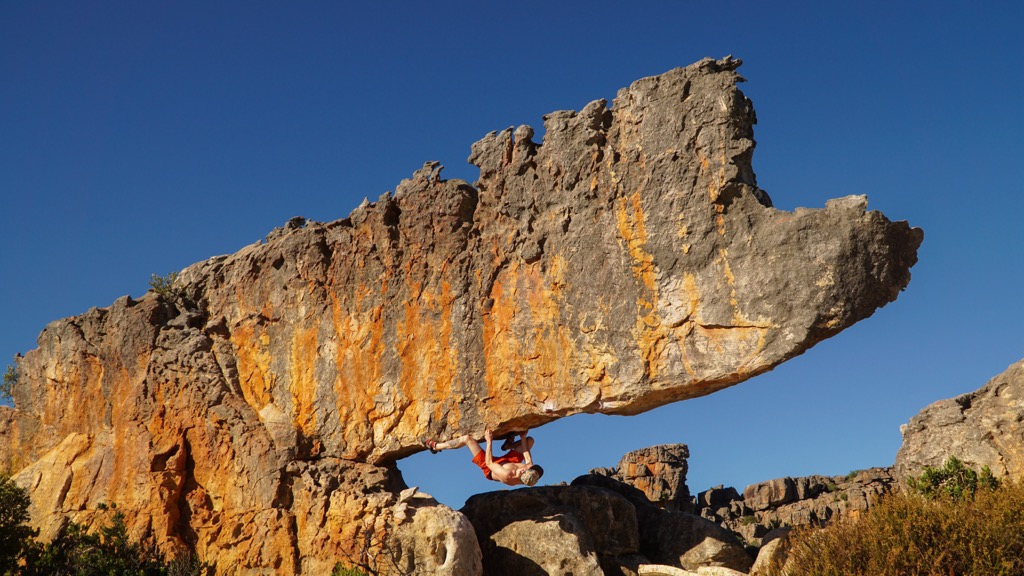
Australia
Australia is its own continent, bigger than the continental U.S. There’s a decent amount of climbing around the mountains of the East Coast. The two most famous zones are the Blue Mountains near Sydney, with over 5,000 routes (mainly sport), and Arapiles in the Grampians, northwest of Melbourne.
Australia may or may not be home to some of the world’s last completely unexplored climbing. The middle of the continent is one of the most vast and remote regions on Earth. It’s a boiling hot desert, but there may be climbing out there somewhere.
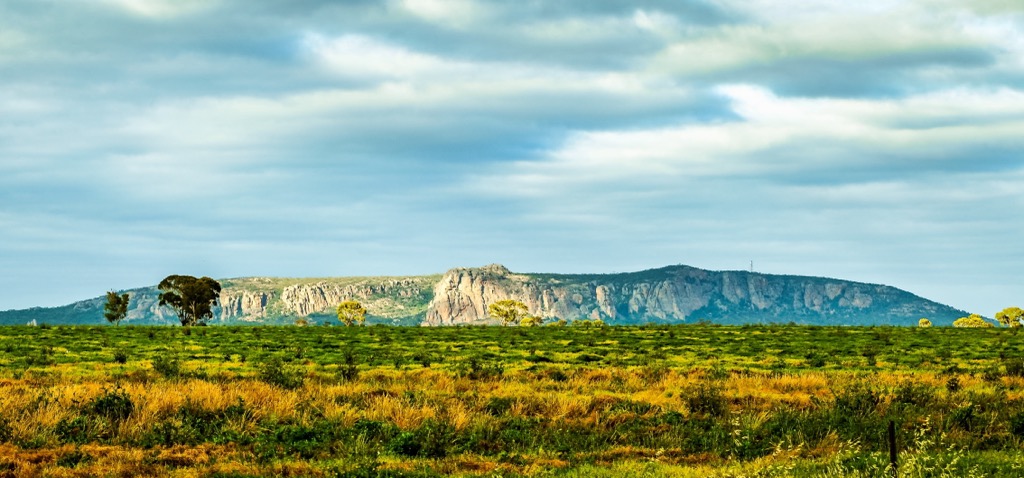
Climbing Apps
True to climbing’s Luddite origins, I only use one App for climbing: Mountain Project. It’s the only one you need.
Mountain Project has many established routes and areas, but not all of them. Moderators add descriptions and pictures for many climbs. You can filter out routes to find what you're looking for, i.e., sport climbs in the 5.8-5.9 range.
However, the best part is that it has a social component. You can see pictures and comments from other climbers, which is helpful. Other climbers can often provide beta that you wouldn’t get from looking at a climb or even a guidebook, i.e., the hanger at bolt 4 is loose, the route hasn’t been cleaned, etc. Plus, people can rate each climb, which is helpful for finding the classics in an area.
Mountain Project is also free. Generally speaking, it’s a great resource if you want to show up at an area and do a few climbs without the guidebook, but the guidebook usually has far more information and climbs listed.
Basic Technique
Women are usually better rock climbers than men at first. Women have less upper-body strength than men and rely less on pulling themselves up with their arms. Instead, they use their feet to move upwards.
If you could condense all technical advice into one sentence, it would be “trust your feet.” It’s a lot harder said than done. Truly trusting your feet requires many weeks of experience on different types of rock to understand where the rubber can hold and where it can’t. But from the beginning, you should focus on using your feet and legs rather than pulling yourself up with your arms. Climbing is less about power than it is about technique. Alex Honnold demonstrated in Free Solo that he’s incapable of doing more than 20 or 30 pull-ups. But his technique is extraordinarily dialed; he trusts his life on his feet. He has stated that he’s never unexpectedly a foot from the rock.
For feet, the main face-climbing techniques are edging and smearing. Edging involves placing the edge of your shoe on an established hold. Meanwhile, smearing is when you use just the friction of the rock and the shoe’s rubber to maintain grip. Foot jams are used for locking the feet into a crack. You generally insert your foot with your ankle rolled up and then stand on the foot, torquing it to lock into the crack (it’s even more painful than it sounds).
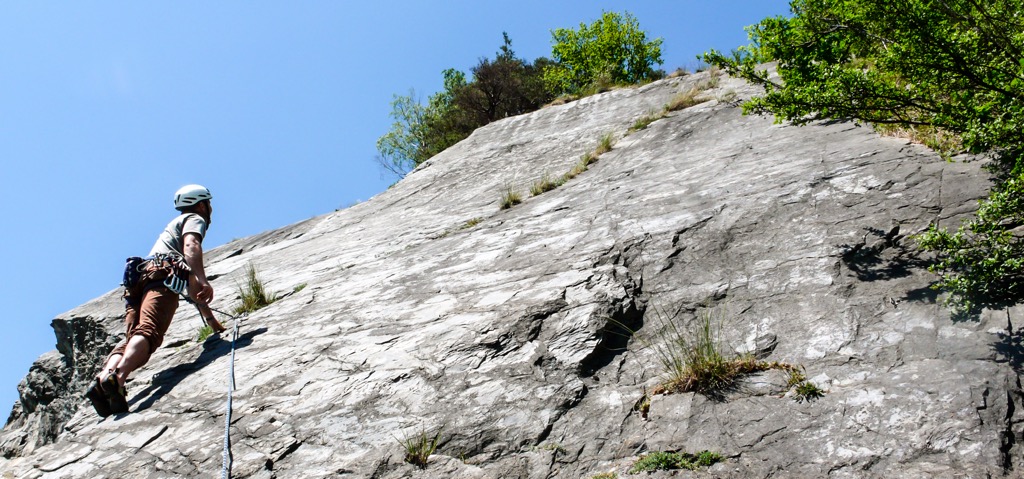
For hands, the easiest climbs will allow beginners just to grab jugs and pull up the route. But athletic beginners will grow out of that in 30 minutes. The next step is the crimp, a primary face-climbing hold. It involves using just the finger pads or the top joint of the finger to hold weight or pull up. Then you’ve got slopers, pinches, underclings, and a slew of others. Check out this article for more beta on face holds.
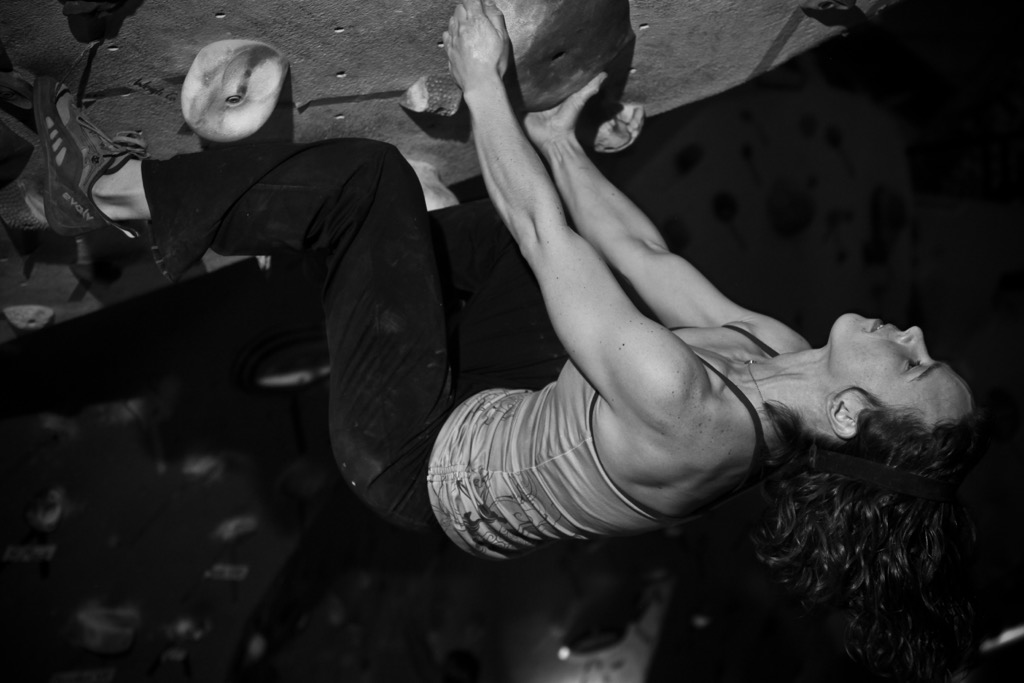
Cracks have their own set of techniques. The hand jam is the gold standard of crack climbing (and maybe all climbing holds in general) because it’s bomber and takes little to no effort to maintain. Just slot your hand in and twist sideways to “torque” it in there. There are also tips, fingers, off-fingers, thin hands, cupped hands, fists, stacked hands, stacked fists, and then a range of off-width techniques that are adapted from ancient torture practices. Read here for some great beta on beginner crack techniques.
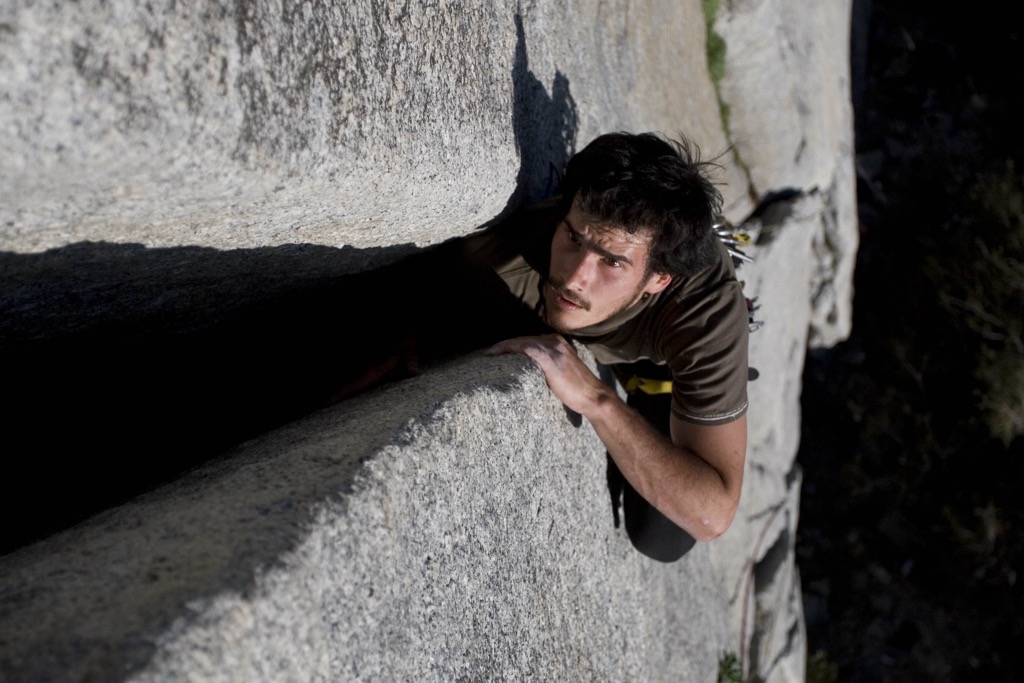
As we’ve established, climbing is not so much about power. In addition to technique, it’s about climbing efficiently. The most important thing to focus on is keeping a hip close to the wall, so your core isn’t drooping out over the rock. Take rest when you get them. When hanging, do so with your arms straight, sometimes called “hanging on bone.” You could hang like this for hours, while even the strongest climbers wouldn’t last more than a few minutes muscling away with their elbows bent. Technique plus efficiency will allow for fluid climbing movement. Check out this resource for an overview of climbing movements, such as stemming and lay-backing.
Improvement follows structured dedication. Climb with folks who are better than you and watch their movement. Try to emulate them on the rock or in the gym. You can also hire an instructor for immediate feedback or dive into YouTube University for trillions of videos and footage on every existing technique and move.
Training for Climbing
Some people would say climbing at the gym is “training for climbing,” while others just consider their gym workout to be climbing. Besides getting quick and easy mileage in a gym, consider using a fingerboard (hangboard).
Ninety-nine percent of the workouts I see people doing in a traditional gym won’t do anything for your climbing. Weight lifting, spin classes, treadmills…they’re all likely useless for climbing. You can cancel the traditional gym membership and put the proceeds toward your new climbing gym. Your new routine can be on the living room floor, doing planks, crunches, bicycles, and other core strengthening exercises.
Almost all great climbers are exceptionally thin. Sinewy, you could say. Cutting down on body fat will undoubtedly help your climbing (although it may not be good for other aspects of your life, especially if your BMI gets too low in older adulthood).

Knots
It’s essential to know at least one knot before you start climbing: the figure-eight. It’s the knot used to tie into the rope. It’s become the standard because it’s safe, simple, and easy to recognize whether it’s been tied properly during a check.
There are a multitude of other knots you’ll need to have in the memory bank as you delve deeper into the sport. Here’s an REI article with clear explanations and video demonstrating the essential climbing knots.
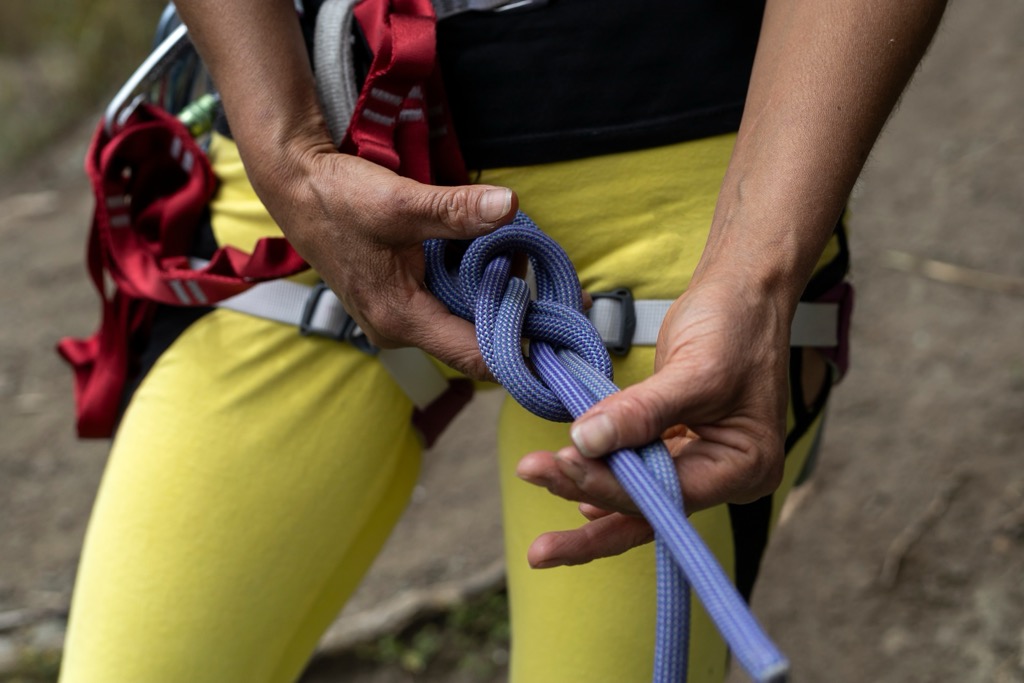
Alpine Clubs
Alpine clubs are a unique element of the sport of climbing. They’ve been around since almost the beginning. The original London social group was called the “Alpine Club,” and all others have followed in its footsteps: you have the French Alpine Club, American Alpine Club, German Alpine Club, etc.
Alpine clubs are non-profit or charitable organizations that are inexpensive to join. They usually offer excellent benefits, like insurance for mountain rescue, discounts on refuges, and social meet-ups. The AAC (American Alpine Club), in particular, works on climbing access nationwide.
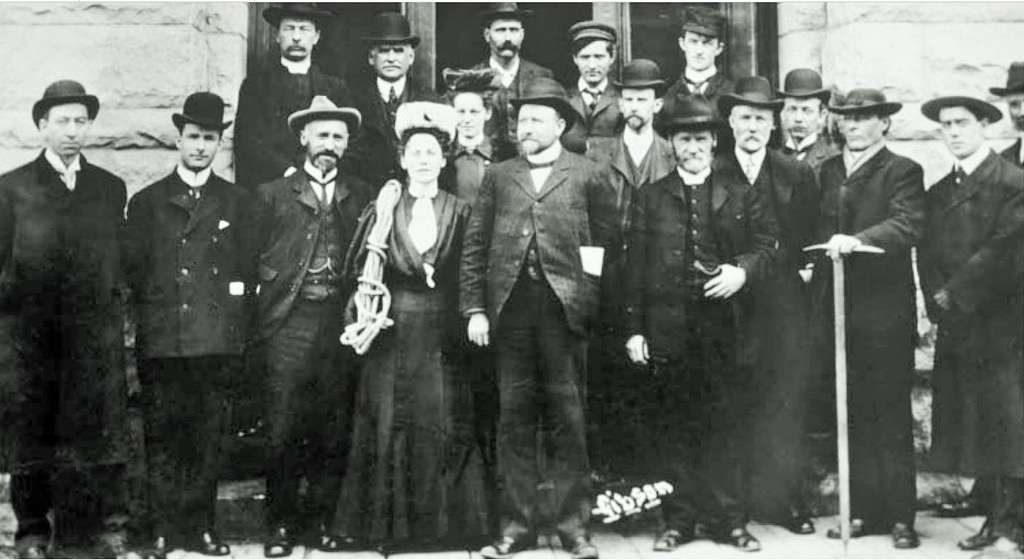
Guidebooks
Mountain Project is a great resource. As I’ve mentioned, however, climbing is a Luddite sport, and most climbers still rely on guidebooks. It’s the medium that provides the most comprehensive coverage of any given region. Plus, guidebooks usually support the local climbing community; it’s contributing a donation for all those access trails and fresh bolts.
At their best, guidebooks offer all the beta you need without giving away too much and still leaving some of the adventure. The best ones give a history of the area, as well as essays and stories about the climbing. They include maps for the access trails, where to camp, parking information, pictures of the cliff to locate the climbs, grades, gear recommendations, and usually an overall rating of each climb, with a few given “classic” status.
I recommend buying a guidebook for your home climbing crags and also if you go on a trip to a famous place like Red Rock or Yosemite. The book is an invaluable resource. Because so many people use one for a limited time period, you can always find great deals on used guidebooks.
Injuries
Climbing injuries cover the spectrum. First, there are the standard wear and tear injuries. One example is tendonitis, whether in the fingers, elbow, or shoulder. Climbers also tend to get tendon injuries in the fingers from crimping. These “pulley” injuries are likely the most common climbing injuries.
The most important way to avoid serious climbing injuries is to prevent falling and hitting the ground. That sounds obvious, I know. But this is how almost all serious climbing injuries happen, albeit in many different ways. The most common is falling on lead and hitting the ground because of an issue with your protection, your belay, or having not yet placed any protection. These injuries run the gamut. Broken ankles are common for short falls, while longer falls often result in spinal injury. Falls from more than 15 or 20 m (50 - 65 ft) are fatal, so we double-check all our systems and stay vigilant to continue climbing another day.
Once you're off the deck and have a few bolts clipped or several solid cams placed, it’s normal to take a good ole leader fall, known as a “whipper” because of the snap of the rope when it catches. In fact, lead falls are essential to get better at climbing, although I’d say it’s safer to take them sport climbing than trad climbing.
In trad climbing, it’s crucial to place reliable protection and have a partner who keeps a tight leash on the belay off the deck. Start placing pro as soon as you can off the ground. There is no need to be a hero as a beginner.
Sport climbing is all about pushing yourself on harder routes, and the ethic is more about safety than trad climbing. Therefore, use a stick clip to attach the first bolt if it’s high. The same wisdom applies; there is no need to be a hero. Once you get off the ground, it’s safe to take lead falls (assuming that the route is at least moderately steep; slabs can be a different story).
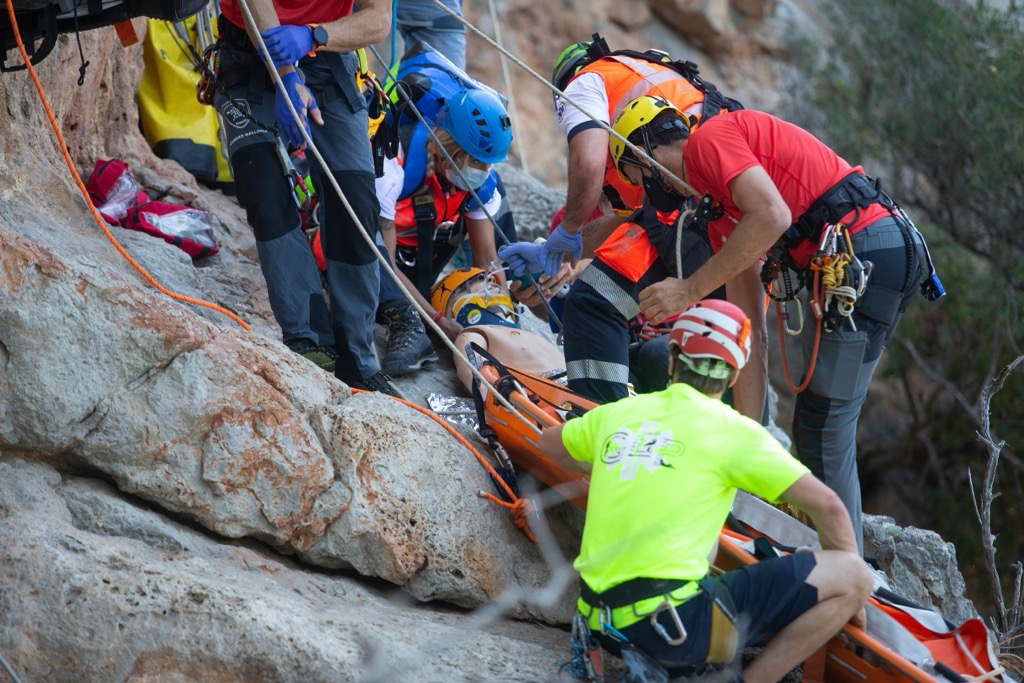
Knowing How Far to Push Yourself
The biggest issue is knowing how hard to push yourself. It all depends on your goals. Attempting harder and harder climbs is part of the fun, but hard climbs tend to have tricky “gate-keepy” starts before you can place pro.
Climbing has a history as a “bold” sport. It largely began with wealthy, aristocratic Brits traveling to mountainous places and hiring local shepherds to guide the first ascents on Europe’s great peaks. It was truly a sport of the leisure class, people who had the means to dedicate everything to climbing. A century later, the climber had evolved into a different sort of leisure class. Climbers still only focused on climbing, but they generally came from solidly middle-class families and lived like paupers to climb every day. It was still an exclusive club, but a different kind of exclusive club. Most climbers were expert climbers; therefore, most climbs were challenging and relatively dangerous.
Today, an element of the sport still upholds that original spirit. In sport climbing, there’s an old-school ethic to put the first bolt high up (you can use a stick clip to attach the rope). A lot of trad climbing is all about big runouts; just look at the most famous area ever, Yosemite. There’s a lot of bold, risky stuff you can do as a climber.
However, the sport is gradually shifting away from that ethic for the good or the bad. More people are climbing recreationally, on weekends, or just a few times a year. More moderate routes are being developed to accommodate those climbers. It’s become much more difficult to live as a climbing “dirtbag” in America. If you’re an adult with a job, you probably can’t afford to take risks of getting seriously injured. What they don’t tell you in the inspirational climbing movies is that if you fall and become injured, you’re looking at a life lived on disability payments and handicap ramps. So, just take it easy, at least at first. That’s my advice.

Negative Aspects of Climbing
The news is full of negativity, and the rest of the internet is full of overwhelming positivity. All of this is to get you to keep reading or to buy something. For a less biased perspective, let’s ask: “What are some of the negative aspects of climbing as a sport?”
The most challenging thing I’ve found with climbing is that a ton of prep is involved. That means it can be hard to get for a couple of hours after work and get a satisfying workout. Driving to the crag, hiking the approach trail, stepping into my harness, dressing it with the assorted tackle, flaking out the rope, waiting on a partner (or them waiting on me)…all these things take a lot of time. Then there’s the basic fact that you only climb half the time and belay the other half. You could spend the entire day and only climb 3 or 4 pitches, depending on how long the approach is.
Look, this is from the perspective of a mediocre climber, but I’ve heard many people complain about it. Because climbing is technical, requires a specific type of fitness that you can’t get anywhere else, and necessitates a particular headspace, it’s very easy to lose all of the progress you’ve made after a break. For every season where I feel like I’ve made progress, it’s like starting from square one again the following spring. You get this phenomenon with everything. There’s always going to be a little bit of rust. But it’s pronounced with climbing. The sport requires consistent dedication to see results. It may not be suitable for people without time on their hands. The key is access to a gym so you can train all year round.
Another thing is that climbing offers little aerobic or cardio fitness benefit, according to studies. That’s a small bone to pick, but you’ll have to do additional exercise like running or cycling to have an athletic heart (from a scientific perspective).
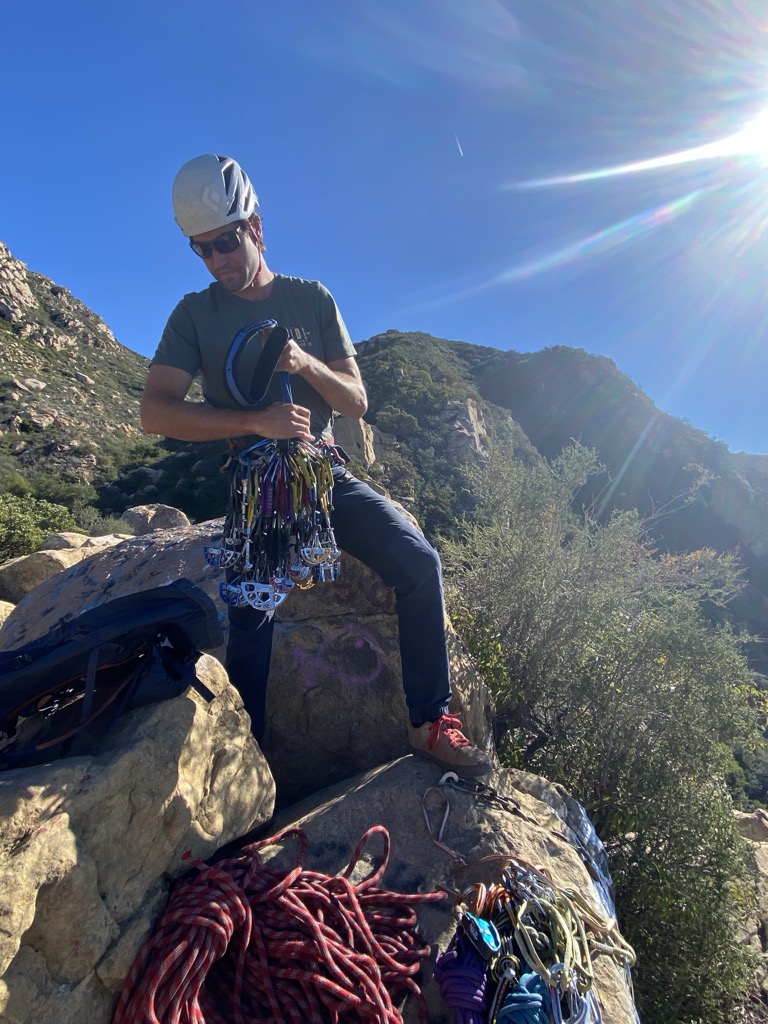
Conclusion
To invest your time and energy into climbing is to embark on a journey that can take you to the very ends of the Earth.
It’s not a perfect fit for everybody, but the sport is becoming increasingly popular with the rise of gyms and improved safety devices like Gri-Gris. Sport climbing made climbing more accessible in the 80s, and gyms took that to the next level. There has never been a better (or, at the very least, safer) time to become a climber.
I’ll leave you with the wisdom of George Mallory, which will remain forever relevant as it applies not just to climbing but to the fundamental truth of humanity:
“People ask me, 'What is the use of climbing Mount Everest?' and my answer must at once be, 'It is of no use.'There is not the slightest prospect of any gain whatsoever. Oh, we may learn a little about the behaviour of the human body at high altitudes, and possibly medical men may turn our observation to some account for the purposes of aviation. But otherwise, nothing will come of it. We shall not bring back a single bit of gold or silver, not a gem, nor any coal or iron...If you cannot understand that there is something in man which responds to the challenge of this mountain and goes out to meet it, that the struggle is the struggle of life itself upward and forever upward, then you won't see why we go. What we get from this adventure is just sheer joy. And joy is, after all, the end of life. We do not live to eat and make money. We eat and make money to be able to live. That is what life means and what life is for.”
George Mallory

